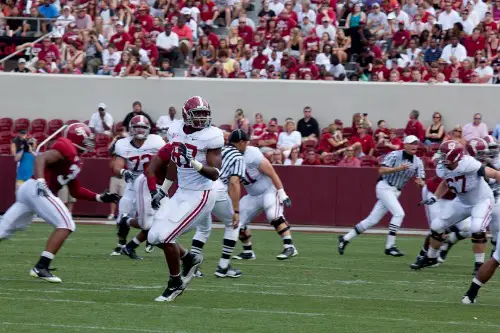1. Huge Portion Sizes

Walk into any diner or casual restaurant in the U.S., and the plates are massive compared to most other nations. Americans have grown accustomed to meals that could easily feed two people. This reflects a broader cultural mindset of abundance and “getting your money’s worth.” But to outsiders, it can seem excessive and even wasteful.
The trend dates back to post–World War II prosperity, when food became a symbol of success. Over time, marketing pushed larger portions as a selling point. Fast-food chains popularized “supersizing,” and it stuck. Other countries tend to value moderation and balance instead of volume.
2. Tipping Almost Everyone

In the U.S., tipping has become second nature—whether you’re at a restaurant, getting a haircut, or picking up a coffee. Americans often feel obligated to tip at least 15–20%, even for mediocre service. In many other countries, though, tipping is minimal or even considered rude because service staff are paid living wages. This expectation confuses visitors who wonder why the listed price isn’t the real price.
The American tipping culture grew out of low service wages and a system that assumes customers will make up the difference. It’s not unusual for waiters or bartenders to rely entirely on tips to earn a decent income. While it’s meant as a gesture of appreciation, it’s now basically mandatory. Other countries often see this as an unfair burden shifted onto the customer.
3. Free Refills Everywhere

In America, your soda glass is never empty for long—free refills are part of the dining experience. It’s almost expected that you’ll get unlimited beverages for the same price. But in most other parts of the world, you’ll pay for every single drink, no matter how small the top-up. The idea of “bottomless” anything just doesn’t exist elsewhere.
This practice reflects America’s consumer-first mindset: more is better, and generosity equals good service. It also keeps customers lingering longer and spending more on food. Abroad, though, people see it as odd and a little gluttonous. It’s a small but telling difference in cultural values around consumption.
4. Ice in Every Drink

Americans love their drinks ice-cold, even when it’s freezing outside. Glasses packed to the brim with ice are standard in restaurants and homes alike. But many Europeans and Asians prefer room-temperature beverages, finding cold drinks uncomfortable or even unhealthy. For them, the American obsession with ice is puzzling.
This quirk likely ties to America’s long history with refrigeration and fast-food culture. Cold drinks became associated with freshness and convenience. The ice craze stuck, becoming a sign of hospitality and comfort. Elsewhere, people see it as overkill—literally watering down flavor for the sake of habit.
5. Drive-Thru Everything

From burgers to banking, Americans love the convenience of staying in their car. Drive-thrus save time, fit busy schedules, and reflect car-centered living. But outside the U.S., this concept hasn’t caught on nearly as much. In dense cities or public-transit cultures, it just doesn’t make sense.
The drive-thru boom started in the mid-20th century alongside suburban sprawl. It became a symbol of efficiency and independence. Other countries see it as a little lazy or overly commercialized. For Americans, it’s just practical—one more way to multitask life on the go.
6. Smiling at Strangers

In the U.S., it’s common to smile or say “hi” to people you pass on the street. Americans often interpret this as friendliness or politeness. But in many countries, smiling at strangers can come across as insincere or even suspicious. It’s a cultural mismatch that often surprises travelers.
This habit stems from the American ideal of openness and approachability. Sociologists note that it’s part of the country’s service-oriented culture and social optimism. In places like Germany or Japan, people reserve smiles for genuine relationships. To Americans, though, friendliness—even superficial—is part of good manners.
7. Wearing Shoes Indoors

Many Americans walk straight into their homes with shoes still on, without thinking twice. It’s such a normal habit that TV shows and movies rarely show otherwise. But in much of Asia, Scandinavia, and even parts of Europe, it’s a major no-no. People see it as unsanitary and disrespectful.
The difference likely comes from lifestyle and architecture. American homes historically had more space and carpeted floors, making it feel less like a hygiene issue. In contrast, cultures that value cleanliness or use floor seating naturally developed a “no shoes” rule. The result: Americans often shock hosts abroad when they stroll inside with sneakers on.
8. Separate Checks at Restaurants

When dining out in America, asking for separate checks is totally normal. Everyone pays their own share without awkward math at the table. But in many other countries, splitting the bill is rare—one person usually pays, and others reimburse later. Servers elsewhere sometimes find the American system confusing or tedious.
This habit ties to the U.S.’s individualistic culture, where financial independence is prized. It avoids the discomfort of owing or being owed money. In collectivist cultures, though, sharing a bill symbolizes friendship and trust. What Americans see as convenience, others see as impersonal.
9. Air Conditioning Everywhere

Americans keep their homes, offices, and stores icy cold in summer months. For many, it’s a mark of comfort and modernity. But visitors from Europe or Asia often complain that it’s too cold—even unhealthy—to have AC blasting constantly. In much of the world, people rely on open windows or fans instead.
Air conditioning became widespread in postwar America, especially in the South. It fueled urban growth and defined the country’s “comfort-first” mindset. Elsewhere, people see it as wasteful and environmentally excessive. To Americans, though, it’s just one of life’s non-negotiables.
10. Constant Snacking

In the U.S., eating between meals is practically a national pastime. Chips, granola bars, and drive-thru snacks fill the gaps between breakfast, lunch, and dinner. Other cultures tend to have fixed meal times and discourage constant grazing. To them, the American habit feels impulsive and unhealthy.
This pattern reflects the country’s fast-paced, convenience-driven lifestyle. Marketing and food availability make it easy to grab something anytime. It’s also tied to long workdays and busy schedules. In contrast, many countries see eating as an event, not a background activity.
11. Working Too Much

Americans wear long hours and minimal vacation as badges of honor. The “hustle” mindset equates productivity with self-worth. In Europe, taking a full month off is normal, while Americans often feel guilty taking even a week. To outsiders, it looks like an unhealthy obsession with work.
This stems from the Protestant work ethic and the country’s competitive economy. Success is often measured in effort and output. While other nations emphasize work-life balance, Americans value ambition and perseverance. The result is higher burnout—and a lot of unused vacation days.
12. College Sports Obsession

Nowhere else do university teams get the kind of fanfare they do in the U.S. College football and basketball attract massive crowds, TV deals, and billion-dollar budgets. In most other countries, sports are separate from academics. The idea of treating a university team like a professional franchise seems bizarre abroad.
This tradition grew from early 20th-century American campus culture, where sports built school spirit and alumni pride. Over time, it turned into a cultural and commercial powerhouse. Other nations prioritize academics over athletics. Americans, though, see it as a community unifier—and a rite of passage.
13. Excessive Flag Display

You’ll find American flags everywhere—front yards, schools, even clothing. Patriotic displays are woven into daily life. But in most countries, flying the national flag year-round is unusual or even seen as overly nationalistic. Visitors often find it striking how visible patriotism is in the U.S.
This habit reflects America’s founding ideals and its long history of national pride. The flag symbolizes freedom, unity, and identity. Other nations tend to reserve it for holidays or official events. Americans, however, see everyday flag display as a sign of respect, not extremism.
14. Asking “What Do You Do?” Right Away

At social gatherings, Americans often ask about your job within minutes. It’s considered small talk—a way to find common ground. But in many countries, that question feels intrusive or shallow. People prefer to connect over family, interests, or experiences instead.
This reflects how closely work is tied to identity in American culture. Careers are seen as personal achievements, not just means of income. In more relationship-oriented cultures, defining yourself by your job can seem boastful. Americans, though, see it as a friendly and practical conversation starter.
This post 14 Habits That Americans Insist Are “Normal” But No Other Country Copies was first published on American Charm.


